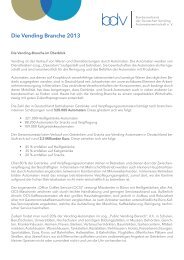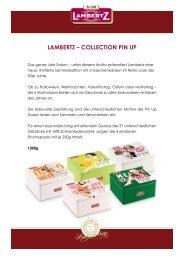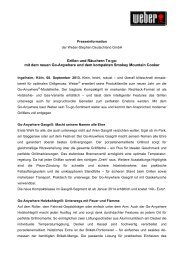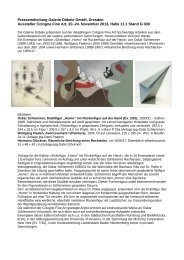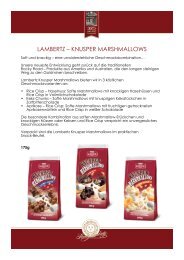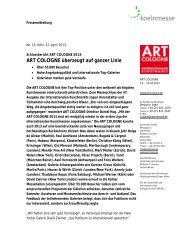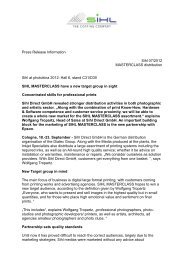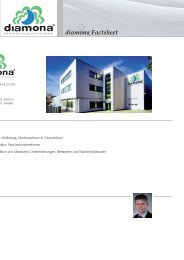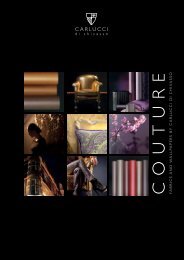WANG SHUGANG - Press1
WANG SHUGANG - Press1
WANG SHUGANG - Press1
You also want an ePaper? Increase the reach of your titles
YUMPU automatically turns print PDFs into web optimized ePapers that Google loves.
:: <strong>WANG</strong> <strong>SHUGANG</strong><br />
:: CIRCLES<br />
12<br />
13<br />
Sculptor Wang Shugang, born in Beijing in 1960, lived for<br />
ten years in Germany’s Ruhr region, where he came to<br />
know both freedom and loneliness. After returning to Beijing<br />
at age 40, he was confronted with the very opposite,<br />
and the artist harvests his forms from this ambivalence of<br />
cultural experience.<br />
Over the past nine years, Wang has created several basic<br />
sculptural forms that apparently emerge from the tradition<br />
of European figuration of twentieth-century realism while<br />
also dealing with Buddhist iconography or the triviality of<br />
Chinese everyday culture: the sweeping monk, the Lama,<br />
the ‘Seated One’, the ball player. From this highly reduced<br />
repertoire in the colors red, white, and bronze, the artist<br />
develops a language that plays with the cultural difference<br />
resulting from the material, as well as questioning the canons<br />
of both the West and Far East alike.<br />
white in the form of neon light exaggerates the ‘enlightened’<br />
Lama, while the artist also creates this motif (including<br />
the supporting columns) using white marble. In so<br />
doing, the artist initiates two things: the image and support<br />
present a united formulation, and the notion of the ‘saint’<br />
in the reception of Buddhism in the West is caricatured.<br />
The repetition and lining up in a group creates ‘brands’<br />
comparable to serially produced industrial products. In<br />
the height of the columns, the artist cites Egyptian as well<br />
as neoclassical forms of presentation, and questions the<br />
Western notion of the individual genius that has been so<br />
prominent since the Enlightenment.<br />
Wang Shugang’s serially created sculptures never appear<br />
alone—the artist installs series, couples, or circular arrangements—but<br />
despite the collective reference, each sculpture<br />
presents the idea of an isolated existence.<br />
The red of the Buddhist monks is on the one hand an<br />
industrially produced paint, that at the same time corresponds<br />
to the red of the Chinese Communist Party. The<br />
The exhibition Circles shows eight different sculpture<br />
groups.<br />
<strong>WANG</strong> <strong>SHUGANG</strong> :: Turn to Happiness, 2009<br />
Group of 12 sculptures (Details) :: Marble, 26 x 10 x 10 cm<br />
Columns each 190 x 13 x 13 cm :: Edition 1/6



